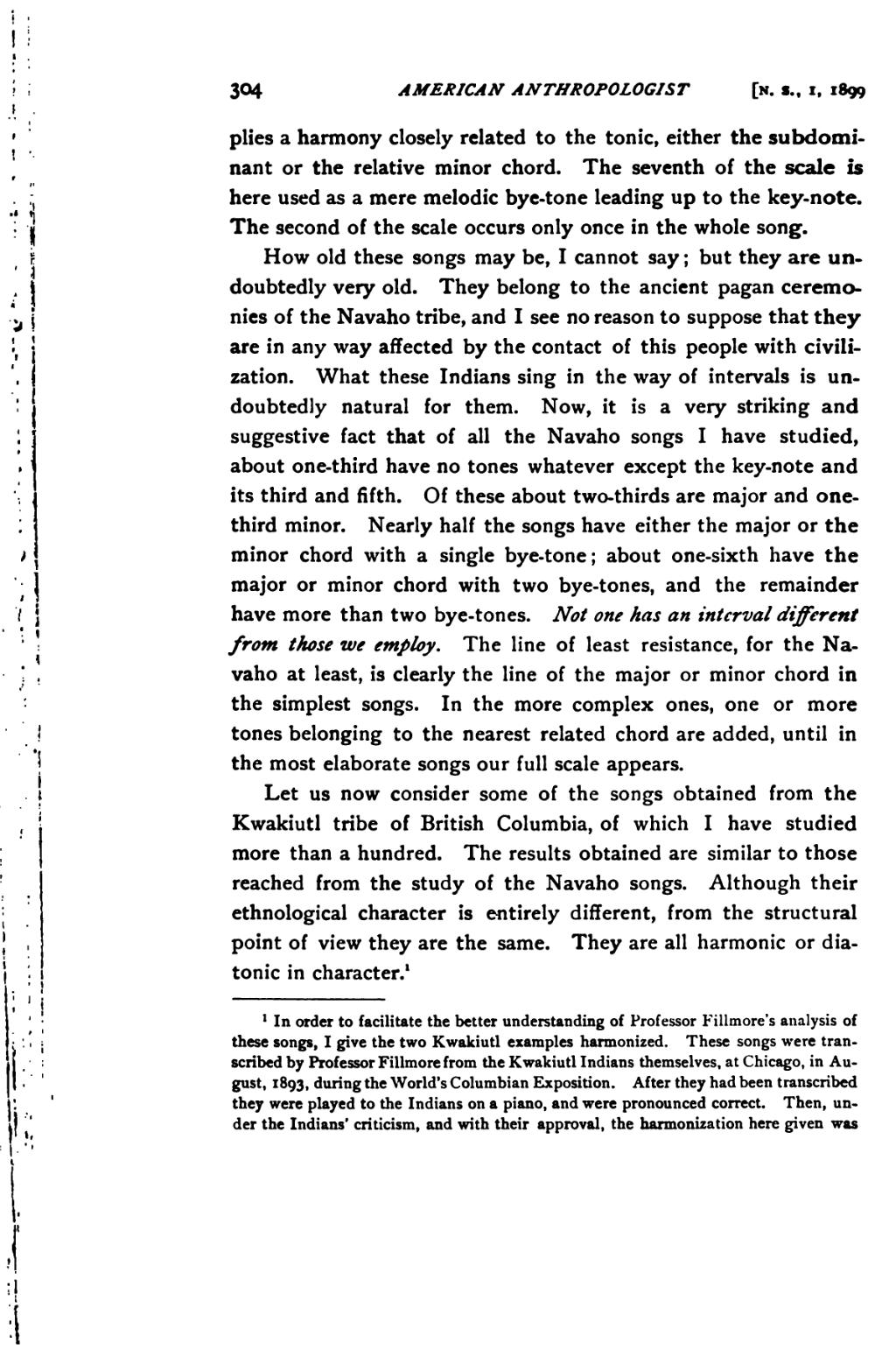304 AMERICAN ANTHROPOLOGIST [u. «., I, 1899
��■']
��! 1
��•
��1 V
i f
��plies a harmony closely related to the tonic, either the subdomi- nant or the relative minor chord. The seventh of the scale is here used as a mere melodic bye-tone leading up to the key-note.
- jj The second of the scale occurs only once in the whole song.
$ How old these songs may be, I cannot say; but they are un-
, i doubtedly very old. They belong to the ancient pagan ceremo-
- , j nies of the Navaho tribe, and I see no reason to suppose that they
are in any way affected by the contact of this people with civili- zation. What these Indians sing in the way of intervals is un- doubtedly natural for them. Now, it is a very striking and suggestive fact that of all the Navaho songs I have studied, about one-third have no tones whatever except the key-note and its third and fifth. Of these about two-thirds are major and one- third minor. Nearly half the songs have either the major or the minor chord with a single bye-tone ; about one-sixth have the major or minor chord with two bye-tones, and the remainder
/ j have more than two bye-tones. Not one has an interval different
from those we employ. The line of least resistance, for the Na- vaho at least, is clearly the line of the major or minor chord in the simplest songs. In the more complex ones, one or more ! tones belonging to the nearest related chord are added, until in
j the most elaborate songs our full scale appears.
t Let us now consider some of the songs obtained from the
Kwakiutl tribe of British Columbia, of which I have studied more than a hundred. The results obtained are similar to those reached from the study of the Navaho songs. Although their ethnological character is entirely different, from the structural point of view they are the same. They are all harmonic or dia- tonic in character. 1
��>
��;!
��• \ 1
1 i
��i;
��1
��1 In order to facilitate the better understanding of Professor Fillmore's analysis of these songs, I give the two Kwakiutl examples harmonized. These songs were tran- scribed by Professor Fillmore from the Kwakiutl Indians themselves, at Chicago, in Au- gust, 1893, during the World's Columbian Exposition. After they had been transcribed they were played to the Indians on a piano, and were pronounced correct. Then, un- der the Indians' criticism, and with their approval, the harmonization here given was
�� �
